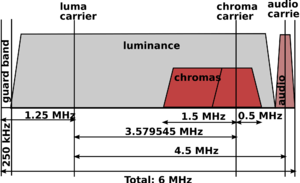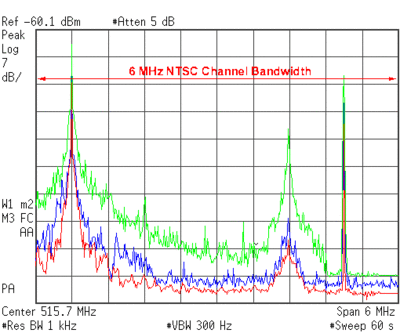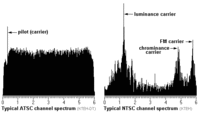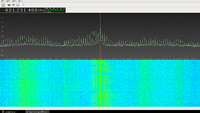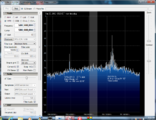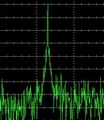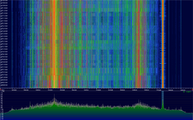NTSC Broadcast
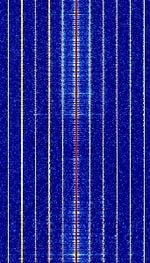 | |
|---|---|
| Frequencies | 54 MHz,806 MHz |
| Frequency Range | 54 MHz - 806 MHz |
| Mode | RAW |
| Modulation | QAM,VSB |
| ACF | — |
| Emission Designator | — |
| Bandwidth | 6 MHz |
| Location | Worldwide |
| Short Description | National Television System Committee (NTSC) Television broadcast is an analogue television broadcast mode. Currently being phased out in parts of the world in favor of digital broadcast. |
| I/Q Raw Recording | Download file |
| Audio Sample | |
National Television System Committee (NTSC) Television broadcast is an analogue television broadcast mode. Currently being phased out in parts of the world in favor of digital broadcast. The successor of NTSC is ATSC.
Characteristics[edit]
NTSC has a Field Rate of 59.94 HzHertz (Hz), unit of frequency, defined as one cycle per second (1 Hz). (60Hz), 525 lines per frame, and a Gamma of 2.2.
Format[edit]
Luma: Amplitude Modulation. The amplitude denotes the brightness on each scan line.
Chroma: Used an analog QAMQuadrature Amplitude Modulation system, where the amplitude denoted the saturation of color, and the phase denoted the hue. This uses the IQQuadrature signals form the basis of complex RF signal modulation and demodulation, both in hardware and in software, as well as in complex signal analysis. (YIQ) color system.
Audio: Standard FMFrequency Modulation modulated audio, with only 25 kHzKiloHertz (kHz) 10^3 Hz bandwidth.
An example of how the signal looks to a RFRadio Frequency receiver, assuming IF bandwidth > 6 MHzMegaHertz (MHz) 10^6 Hz:
Frequencies[edit]
NTSC shares the same frequencies as ATSC
Decoding Software[edit]
- Hobby Level Software
Encoding Software[edit]
- Hobby Level Software
